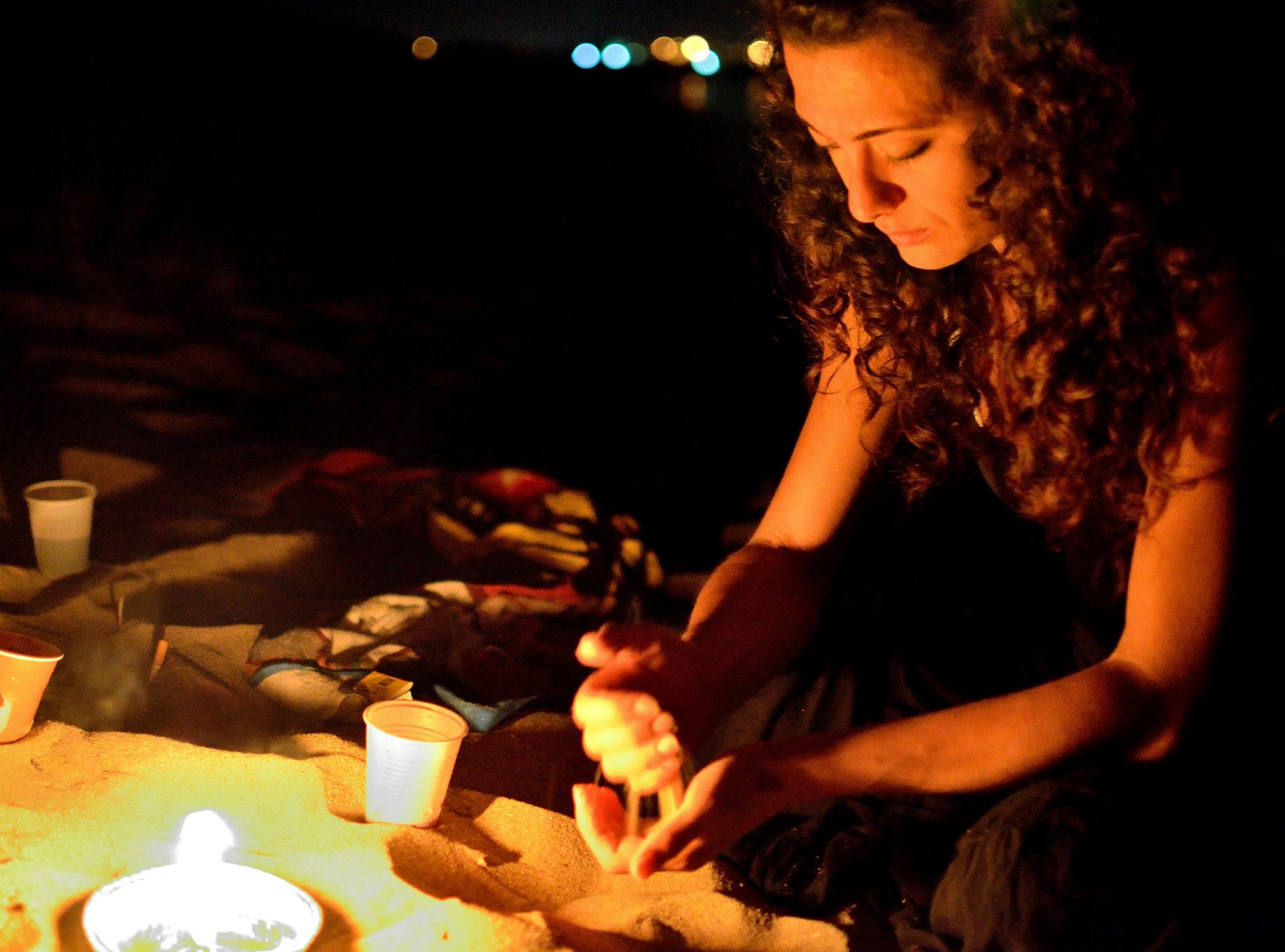I left two things very important for me in Sarajevo, that are almost essential for every traveller.
The credit card and the desire to get back.
If finding a solution to the first issue is relatively easy, the thing about getting back might take a while.
Sarajevo is among the places that make you feel as if you haven’t spent there enough time, be it a day, a week or a few years.
There are too many possible ways to tell its story, too many voices describing it, as well as too many views to see in too many moments of the day, offering different shades and intensity.
Too many ethnic and cultural stories to take in, unless you come from Bosnia (as the man on the bridge in Mostar said, “You have just come to terms with the coexistence issue. We have been dealing with it for over 400 years”).
Too many connections among medieval, modern and contemporary history, with Bosnia and especially Sarajevo playing a key role.
Well, let’s do things in order and start with the only story that my narrow-minded outlook allows me to tell.
(short 15 second video of a bazaar in the historical turkish neighbourhood)
How did I get here?
I really want to go back to Sarajevo, despite the serious troubles you can have when leaving from Apulia:
The only company flying to Bosnia from Apulia is Mistral Air (relatively low cost though somewhat epic flights), landing in Mostar.
Otherwise, you can reach Sarajevo flying Alitalia, only if you are willing to travel for 7 to 9 hours waiting for connections at the airport, for the cheap price of 600-700 euros for the round trip!
Or you can do just like I did: after landing in Mostar, take a local bus.
The bus service is available all day every day, on an hourly basis.
What expects you is a three-hour drive along sharp twists and turns in the hill woods (Sarajevo is higher than Mostar, resulting in a microclimate change).
Don’t drink too much because the bus only stops for 5 minutes, not enough to let everybody take a leak.
My suggestion is to land in Mostar and spend there one or two days, then move to Sarajevo. From seven to ninety days as the shortest timeframe.
Also read
Quick tips for your visit to Mostar, Bosnia

Sarajevo is full of history and traditions of different cultures, but it is also a city that offers interesting examples of post-modern architecture, with a style that reminds of the old mosques and minarets.
While I was in the bus with Nadia, my red-haired friend, heading to the city centre from the station, we asked a passenger how close to the arrival we were and, heedless of my narrow-minded concept of “centre”, he replied
“What centre? There are many”. (the passenger’s mother was busy noticing how beautiful Nadia’s eyes are and asked her son to translate into English for her).
The famous “centre” can be the Turkish neighbourhood, the Latin bridge and the national library, the business area, the riverside, as well as the area(s) featuring more modern spots and ideal for young people.
My suggestion is: take the bus leaving from the station (number 1 and 3), get off close to the Latin bridge (one stop after the modern ribbon-shaped bridge, pretty nice, on the Maljiacka river).

Turkish neighbourhood (Barscarsija)
You can go straight to the Turkish neighbourhood, by taking the alleys on the left of the river.
Now, if you’re hungry, pay attention to details: the typical local food is mainly based on meat and, being in a Turkish neighbourhood, many places might not have alcohol on their menu.
We were really hungry and quite rashly stopped at the first place we found, where a waiter outside invited people to sit at the tables. We asked him if they served typical food and his reply was clearly positive.
The typical food was the typical meat with the typical bread. At that point, we were like “well sorry then, we’ll just have two beers” and his reply was “we don’t serve alcohol”.
The waiter realized how stupid and embarassed we felt and kindly went to a nearby shop to buy another typical local food for us, the pita pie, made of filo pastry and with an eggs and potatoes stuffing (there’s also a version with cheese, spinach, pumpkin or even empty, and it’s a typical dish made by bosnian mothers/grandmas).
Saying he was kinder than what he had to may not be enough, but in our case it happened regularly, even in non-tourist locations. Grumpy and kind at the same time.

The narrow streets swarming with shops that sell handmade copper products and the alleys with bazaars selling all sorts of jingling things and incense will lead you to Bašcaršija Square, where there’s a pseudo-Ottoman style wooden fountain, Sebilj, dating back to 1750 (it was actually placed in this square in 1891).
By walking on Sarači street, you’ll find Gazi Husrev-Begova dzamija on the left, the most important mosque in Bosnia. We didn’t get in because there were many believers both inside and outside. I’m not religious, neither is Nadia, but we consider other people’s privacy and devotion places as sacred, so we decided to see this mosque from the outside and that was enough for us.
Yet, I’ve found that there are wonderful fountains outside the mosques in Bosnia. Well, fountains for purification rites outside mosques are almost everywhere.
But here I noticed they are part of the overall architecture of the place of worship. They are all really nice and this one is clearly among the nicest.

In the Turkish neighbourhood there’s also the orthodox cathedral, a synagogue and the catholic cathedral of the Sacred Heart. Let’s get back to the 400 years advantage regarding the coexistence of several religions, which today they want to pass off as a conflicting clash of civilizations.
Yes, you remember well, I have already talked about a similar situation in Sofia.

Along the river Miljacka
Let’s get back to the river and the stories it tells. Along the river Mijiaca, after the post-modern bridge where you walk down into the turkish neighbourhood, there’s the well-known Latin bridge (how many of you remember that the archduke Francesco Ferdinando was killed right here by Gravilo Princip with all due consequences?).
Another interesting thing on the left side of the river is the Vijecnica library, in Moorish style, one of the city symbols.
Suggested walk along the river at sunset until evening:

- The Central Post Office, the most important building of the Austro-Hungarian period, that was entirely destroyed at the outbreak of war in 1992 and rebuilt in 2001.
- Likovna Akademija, the Art Academy,
- the Ashkneazy synagogue, the third biggest synagogue in Europe.
Take a detour from the riverside: Veliki Alifakova is the road on the left of the Inat Kuća restaurant, a place with typical furniture and serving local dishes, actually one of the most famous in Sarajevo. At the top of this slope made of round stones (that certainly have a name I ignore), you’ll find one of the many cemeteries in Sarajevo.
Throughout my whole trip to Serbia, I had the chance to realize the incredible number of cemeteries that are there, with new gravestones, still white and untouched by time.
Such whiteness comes from the fact that here, over 70% of the gravestones and cemeteries in general date back to the period 1993 – 1997.
I won’t say more about this, just like the natives who don’t count much to travellers, and you’ll excuse me but there won’t be pictures of these places on my blog. I’ve visited many of them (impossible not to), even stopping for a little while. But I didn’t take pictures. As written in my post “Why visiting the Balkans”, sometimes reading about a place is not enough. You have to go there.
All I can say is that from here, on the highest part of the road, at sunset and in the evening you’ll get one of the best views of Sarajevo.

11 Comments
-
Ali Rost
That beautiful photography and cool place to visit. I was especially captivated by the photo of the bridge at night and lights from the city. Thanks so much for sharing!
-
Ana
Your trip looks so much fun and loved your pictures! Also, loved the architecture of the mosques in Bosnia!
-
Agness of Fit Travelling
I love the Balkans! This part of Europe is rich in history and the people are very friendly! Thanks for the tips, Sabrina!
-
Travel Pockets (Crystal)
Never thought about visiting Bosnia, but your article has got me curious for sure!
-
Nina
This looks like it was an awesome trip! I have yet to explore Eastern Europe, but it’s on my list!
-







chichi
wow after reading the post i am so inspired to travel to sarajevo! looks and sounds perfect for me!